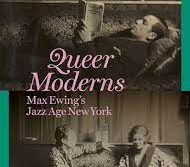 Hot Stuff: Disco and the Remaking of American Culture
Hot Stuff: Disco and the Remaking of American Culture
by Alice Echols
Norton. 338 pages, $26.95
COMPARED TO MOST musical genres, disco ascended, flourished, and fizzled in a remarkably brief period from roughly the mid-1970’s until the early 80’s. It’s fair to say that disco didn’t even enjoy a solid decade of widespread popularity. Of course, those dates are debatable, and it all depends on how you define disco. And while disco’s reign was quick and fleeting (not to mention conflicted) in the U.S., it fared much better overseas. Alice Echols’ Hot Stuff: Disco and the Remaking of American Culture offers a history of the disco era, but as the book’s title indicates, it’s more an interpretive, cultural history than a “who-what-where-when” catalog of disco’s origins, performers, and songs.
Disco emerged during a strange and difficult time in America. By the mid-1970’s, Saigon had fallen, and the country was reeling from the Watergate scandal, inflation, and the energy crisis. The administrations of Presidents Ford and Carter both seemed to struggle through this period, and the nation’s attempt to celebrate its bicentennial in 1976 seemed especially incongruous, even forced, in light of the grim realities facing most Americans. In the cultural arena, the Sexual Revolution, which had started in the late 60’s, was just starting to take off in the 70’s. In his 2007 book, Turn the Beat Around: The Secret History of Disco, Peter Shapiro suggested that the birth control pill and the sexual freedom it promoted helped open the door to sexual promiscuity and to greater acceptance of gay promiscuity by straight people—a co-existence that helped the disco club scene take off so quickly. Like Shapiro, Echols acknowledges, and examines, the role of sexual freedom in general and gay subculture in particular in propelling disco into the mainstream. But she also goes further, discussing how race, class, and gender politics informed the rise of disco, and how marginalized groups both benefited, and were excluded from, disco’s brief halo effect. Echols comes to her subject with some degree of personal investment. In a semi-autobiographical introduction, she writes about her turn as a disco deejay during her student days at the University of Michigan in Ann Arbor. Her recollections of Ann Arbor’s Rubaiyat disco (she even includes a reproduction of one of the club’s now quaint-looking cocktail napkins) serve as a useful preamble to her general history, in a way because her story departs from the usual disco narrative. Echols’ experience of disco, and her discussion of it, begins in a place well outside of disco’s “epicenter” in New York City. Her story also includes women, and an examination of African-Americans’ disco experience. “It highlights the fact that there was no single disco experience, even among those who shared the same wood parquet dance floor,” she writes. Echols is committed to presenting a full explication of both disco’s cultural origins and its impact. She devotes a complete chapter to an examination of black masculinity as seen through the lens of R&B, disco, and the black musical tradition in general. She also includes a chapter on women in disco, focusing not only on “disco’s divas,” but also advancing the theory that disco helped recalibrate American sexual attitudes by putting female desire up front in songs like Labelle’s “Lady Marmalade” and Diana Ross’s “Love Hangover.” Echols also believes that black female musicians (especially Chaka Khan, who is singled out for particular praise) deserve more credit for promoting black feminism than they’re usually given. And in a fascinating chapter on the ultimate disco film, Saturday Night Fever (1977), Echols not only chronicles the curious genesis of the movie and its music, but also provides a thorough, sensitive, and nuanced reading of the film, convincingly arguing that it deserves a re-evaluation. But much of Echols’ book focuses on disco’s gay origins. She quotes and refers often to gay fiction from that era (such as Andrew Holleran’s Dancer from the Dance and Larry Kramer’s Faggots) and about the era (such as Edmund White’s The Farewell Symphony and Brad Gooch’s The Golden Age of Promiscuity). While Echols gives the gay clubs their due for promoting the rise of disco, she also acknowledges that they could be a territory of elitism, sexism, and racism. Many of the iconic gay discos were “members only” (not to mention men only) and charged hefty membership fees and drink prices. The upshot of these practices, of course, was that only affluent white men could gain entry. The clubs were also a key factor in the cultivation of a gay macho ethos, a subject to which Echols devotes a separate chapter, and they were among the most prominent sites where the impact of AIDS was first visible—as the dance floors became hauntingly emptier in the 1980’s. One of the more refreshing elements of Echols’ book is that she takes other music and cultural historians to task for their all-too-easy drift into “disco revisionism,” which typically traces how “good disco”—the authentic, pure music rooted firmly in a subculture (in this case, gay subculture)—devolved into “bad disco” as it lost authenticity once it became popular and entered mainstream pop culture. Echols sees a much more complex history than this facile revisionist narrative. Her book is thorough and even serious, but her prose is not stilted or academic. Hot Stuff is a valuable contribution to a growing shelf of disco history, and it’s also very entertaining and fun. Jim Nawrocki, a frequent contributor to this magazine, is based in San Francisco.




